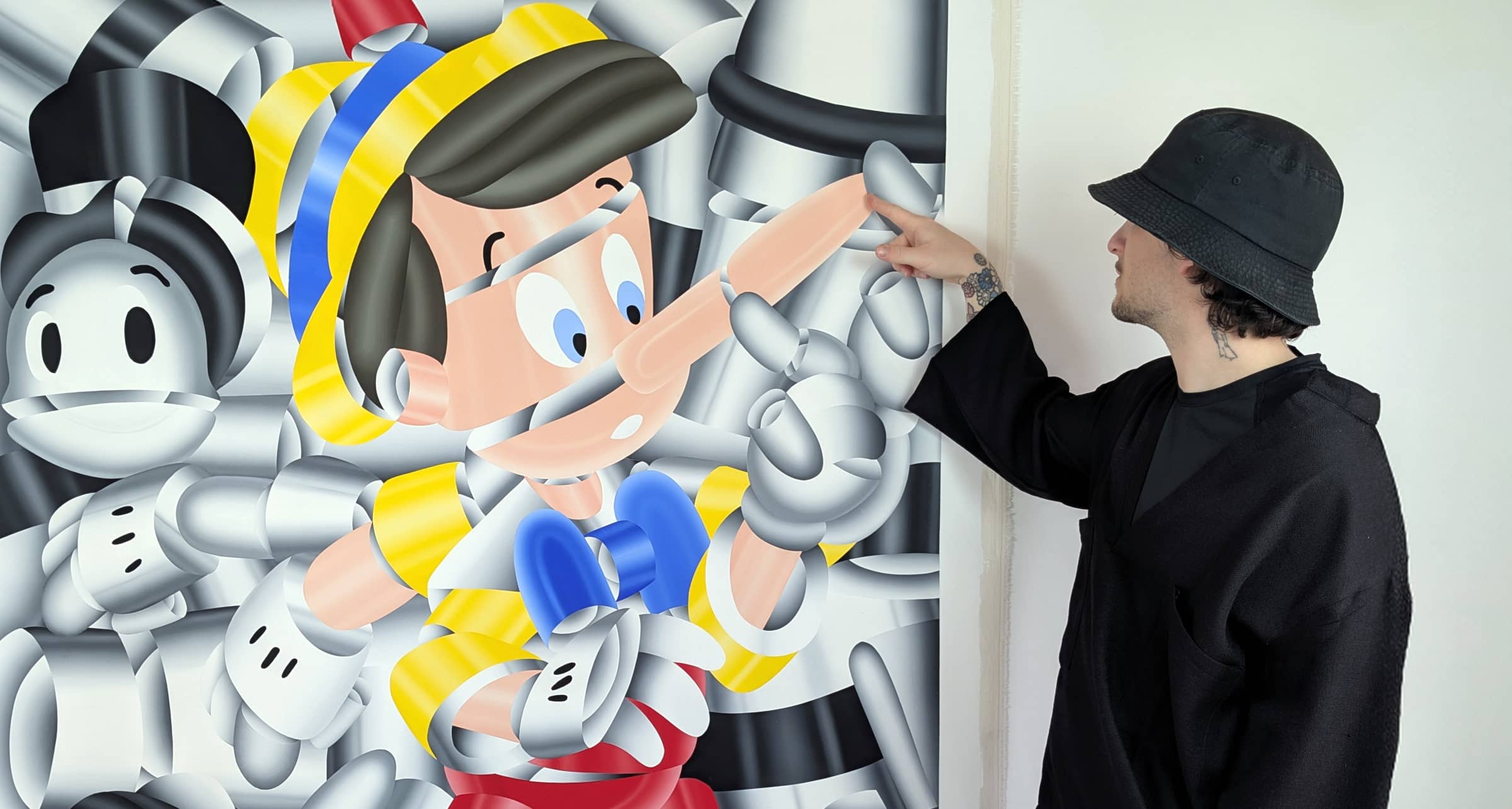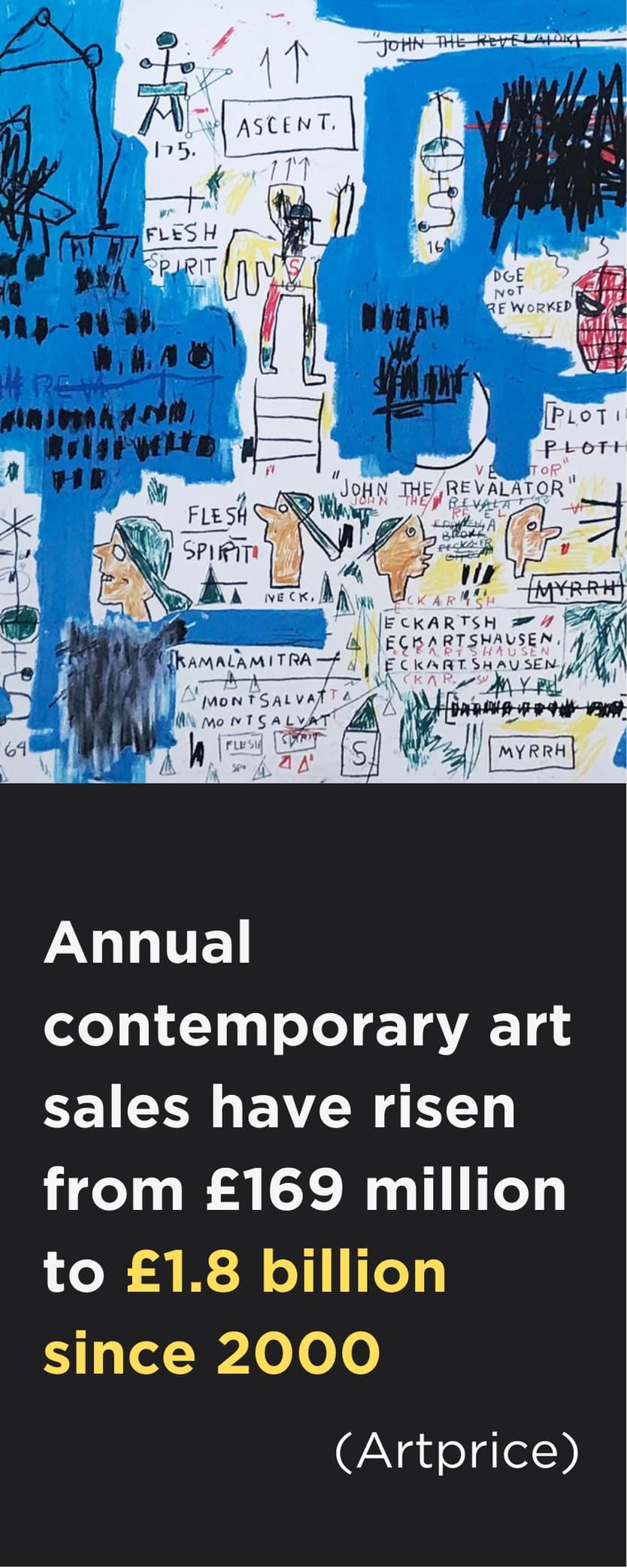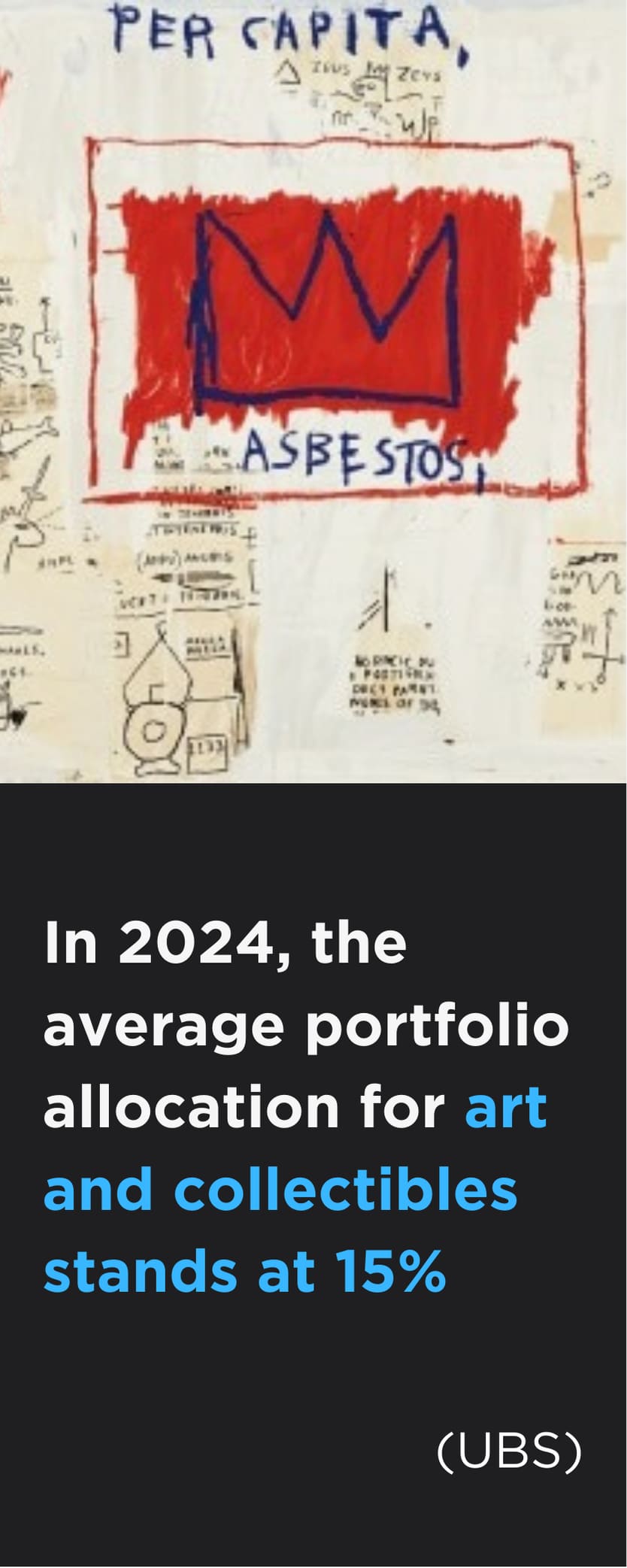Geoffrey Bouillot’s artistic practice occupies a unique space at the intersection of Cubism, Pop Art, Manga, and Futurism. Born in France in 1990 and based in Tokyo for over a decade, Bouillot’s work is deeply influenced by both European modernist traditions and Japanese pop-culture aesthetics. His monochromatic paintings, defined by clean, sharp lines and mechanical precision, reflect his personal journey and critical observations on modern society.
“I am a child of Pop Culture, shaped by Modern and Industrial influences, rooted in Cubism, and the dynamic rhythms of Futurism,” says Geoffrey Bouillot. This statement encapsulates the complexity of his influences. Growing up amid the Manga boom in France, Bouillot cites Dragon Ball as an early inspiration. However, his artistic ambitions initially clashed with practical realities. “For my parents, art wasn’t considered a serious job,” he recalls, prompting his move to Tokyo to pursue art independently.
Artist Geoffrey Bouillot pictured with his latest series for Maddox Gallery
From Cubism to Consumerism: Bridging Traditions with Mechanical Precision
In Japan, Bouillot immersed himself in rigorous self-study, meticulously researching European masters like Picasso, Matisse, and Braque, and experimenting with various techniques. His style evolved significantly when he encountered Tokyo’s vibrant contemporary art scene, particularly influenced by the Japanese Superflat movement, known for its flat, colourful, cartoon-like imagery combined with sharp critiques of consumer culture and contemporary society. Bouillot blends this approach with Fernand Léger’s distinct metallic aesthetic. Léger’s style is characterised by geometric shapes and a mechanical style reflective of industrial progress and modernisation. “I fuse the graphic simplicity and cultural critique of Superflat with Léger’s robust, machine-inspired forms,” he explains.
Canvas to completion of Synthetic Sweetness
“Winnie the Pooh, a figure of innocence and comfort, is transformed into a mechanical, almost industrial entity. His overturned honey pot evokes both excess and overconsumption, highlighting our relationship with instant gratification and mass production. His robotic appearance questions the transformation of our emotional symbols into mere merchandising objects. Synthetic Sweetness exposes how even the purest emotion can be standardised and industrialised, to the point of losing its original essence.” – Geoffrey Bouillot on Synthetic Sweetness.
The industrial aesthetic of Bouillot's works, though executed entirely by hand, reflects his exploration of mass production and consumerism. “Everywhere you look in Tokyo, there’s repetition—the same products, the same characters on everything from shampoo bottles to toilet paper,” Bouillot observes. His paintings explore this ubiquity and repetition by breaking down beloved pop-culture figures into mechanical, fragmented forms. Despite this, Bouillot consciously embeds humanity within his subjects through balanced, intentional compositions, admitting that his perfectionist tendencies have intensified over time.
Nostalgic Narratives: Creating Conversations Through Art as a Mirror of Society
Bouillot’s subjects often stem from nostalgia, recently reinvigorated through experiences with his four-year-old daughter. “She loves Nintendo and Ninja Turtles—characters from my own childhood,” he shares. This renewed connection to childhood media has become central to his recent works, exemplified in his series created for Maddox Gallery, including pieces like Monopoly Dreams, Pixel Pursuit, and Synthetic Sweetness.
The artist with his piece Monopoly Dreams
“Mr. Monopoly, a symbol of capitalism and power, is depicted as a well-oiled machine, built to generate wealth. He leans on a plastic duck, a game piece used to move forward on the board, which here takes on a deeper meaning: are we truly the architects of our financial journeys, or are we merely carried along by a larger system that dictates our movements? Monopoly Dreams presents a world where everything is calculated, optimized, and structured like an unstoppable mechanism.” – Geoffrey Bouillot on Monopoly Dreams.
Bouillot carefully selects his artwork titles to reflect the themes and intentions behind each artwork, guiding viewers towards the emotional and conceptual layers within his pieces. While his titles are intentional, he welcomes varied interpretations from viewers. “Art should speak to people individually,” he insists. He describes art as a mirror, reflecting different meanings depending on personal context, much like his favourite book, Le Petit Prince by Antoine de Saint-Exupéry, a text that reveals new meanings every time he reads it.
Perfecting Reflections: Art as a Mirror to Society
Ultimately, Bouillot offers a nuanced commentary on the intersections of nostalgia, identity, and consumerism. Just like society itself, his art is in constant evolution, encouraging viewers not only to revisit familiar figures from their past, but also to reconsider their relationships with the industrialised world that shapes contemporary identity.
“Pinocchio, a puppet searching for humanity, is presented here in multiple fragmented forms. His nose, depicted in different sizes, and his multiple hands illustrate the instability of his identity—lies and truth coexist, artifice becomes indistinguishable from reality. The head of another Pinocchio at his feet suggests an infinite cycle of self-construction and deconstruction, as if his existence were doomed to be constantly reprogrammed. Strings of Deception question the illusion of free will and the fabrication of truth in a world where everything can be shaped and remodelled at will.” – Geoffrey Bouillot on Strings of Deception.
The Future of Geoffrey Bouillot
The meticulous attention Bouillot invests in each piece is clear from the 60-hour long process required from conception to completion, highlighting both his dedication to precision and his relentless pursuit of artistic excellence. Yet, despite the labour-intensive process, he remains dynamic and ever evolving, eager to explore new territories like iconic portraits and even abstract art. “I don’t like to repeat myself thematically,” he emphasises. “I’ve developed a graphic language, and now I can use it to tell different stories.” The artist is committed to exploring new dimensions within his practice, continuously engaging with the cultural narratives and mechanical aesthetics that define his unique style.
For collectors and enthusiasts, Geoffrey Bouillot’s works at Maddox Gallery represent an opportunity to own part of an engaging dialogue—a fusion of nostalgia, contemporary critique, and technical mastery. To enquire about available paintings and delve deeper into Bouillot’s artistic world, contact our team at Maddox Gallery.
Discover Geoffrey Bouillot’s unique universe, a journey where the familiar and the contemporary, craftsmanship and mechanisation, come together in perfect, thought-through balance.








